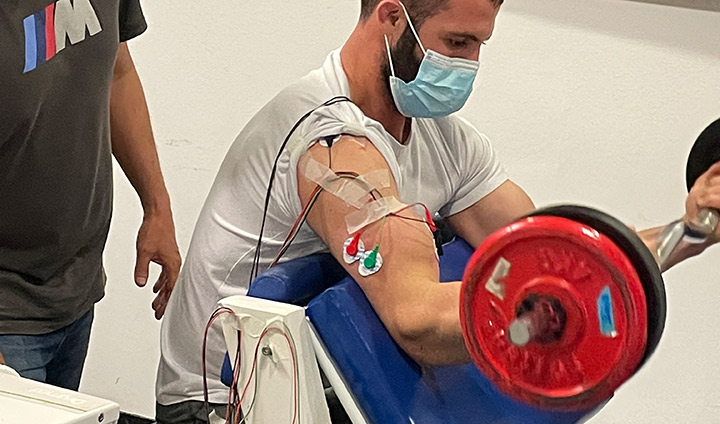How different types of hypoxia affect neuromuscular markers, metabolic stress and associated mechanisms during a 8 weeks hypertrophy strength training
About this project
Project information
The main objective of this study is to compare the functional (maximum strength and muscular power), physiological (neuromuscular adaptations and variables related to oxygen saturation, metabolic stress and mi-RNA) and morphological adaptations (weight, muscle volume, lean mass and fat) of a 8 weeks hypertrophy training period in three different conditions: hypobaric hypoxia, normobaric hypoxia and normoxia. For this, a longitudinal experimental design with repeated measurements and comparisons both intra- (pre-post treatment) and inter-group (hypobaric hypoxia vs. normobaric hypoxia vs. normoxia) will be used. Three groups will be compared: live low & train in hypobaric hypoxia; live low & train in normobaric hypoxia, and live & train at sea level, acting this last as a control group. The established altitude condition will be the corresponding or equivalent to 2320 m asl.

Researchers
Research groups
Collaborators
- B. Fuente, High Performance Training Centre, Sierra Nevada
- Belen Feriche, University of Granada
- Brad J Schoenfeld, City University of New York City
- C. Benavente, University of Granada
- C. Calderón, High Performance Training Centre, Sierra Nevada
- Filipa Almeida, University of Granada
- Gonzalo Marquez, Universidad Católica San Antonio de Murcia
- Guillermo Olcina, Universidad de Extremadura
- J. Argüelles, High Performance Training Centre, Sierra Nevada
- J. León, Clinical Management Unit of Digestive System, San Cecilio Hospital, Granada
- Juan Bonitch-Góngora, University of Granada
- Paulino Padial, University of Granada
- Rafael Timon Andrada, Universidad de Extremadura
- S. Morales, Clinical Management Unit of Digestive System, San Cecilio Hospital, Granada
